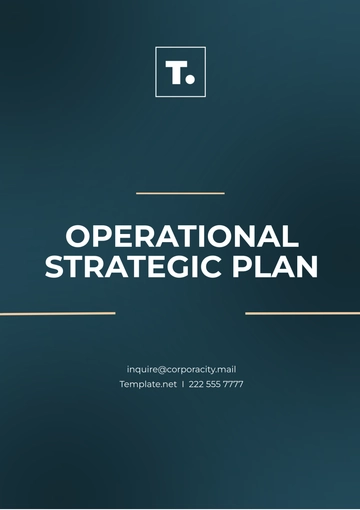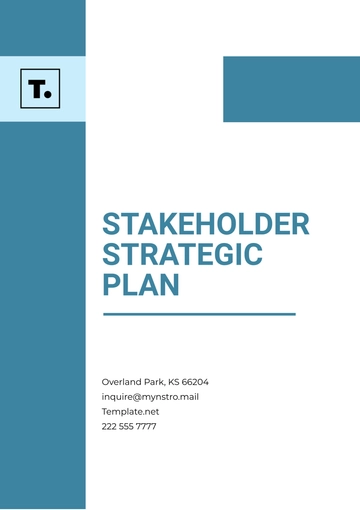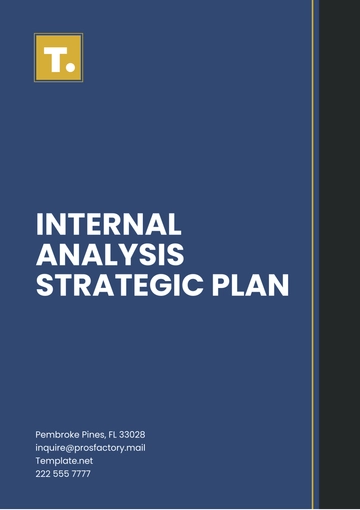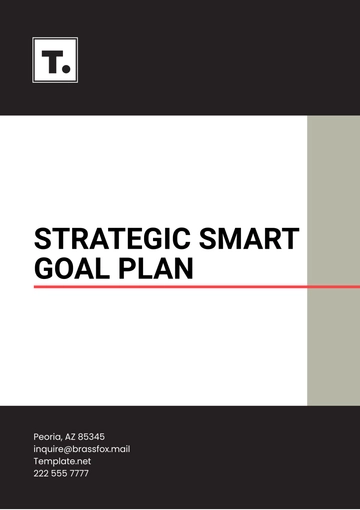Free Community Development Strategic Plan

Prepared by: [Your Name]
I. Executive Summary
This Community Development Strategic Plan presents a detailed roadmap to enhance the economic, social, and environmental well-being of the community starting in 2050. This plan is designed to address critical challenges, foster sustainable growth, and improve the quality of life for all residents over the next three decades. With a focus on long-term resilience, inclusivity, and sustainability, this strategy will guide the community through a transformative era of development.
II. Community Assessment
A. Economic Overview
The community's economic profile in 2050 shows growth in tech-driven industries such as renewable energy, biotechnology, and digital services. However, traditional sectors, including manufacturing and retail, continue to face issues related to automation and job displacement. Key challenges include:
Unemployment and Underemployment: While the digital sector grows, there remains a skills gap, with many workers unprepared for tech-based roles.
Income Disparity: Economic inequality is rising, with a need for policies to bridge the gap and create fair opportunities across demographics.
B. Social Dynamics
The community benefits from a vibrant cultural scene, diverse population, and active local organizations. However, pressing social issues require immediate attention:
Access to Education: As technology advances, ensuring access to digital education and vocational training is vital for future generations.
Healthcare Disparities: Despite advancements, healthcare access remains uneven, especially in underserved areas. Mental health support and preventive care also need prioritization.
Aging Population: As the demographic ages, there’s a need for services catering to seniors, from health and housing to community integration.
C. Environmental Profile
In 2050, the community is committed to becoming a carbon-neutral zone by 2070. Prioritizing sustainability is essential in the following areas:
Renewable Energy Adoption: With government incentives, renewable energy use has grown, but fossil fuels still account for 30% of the community’s energy mix.
Waste Management: Over-reliance on single-use plastics and inadequate recycling infrastructure contribute to environmental degradation.
Air and Water Quality: Industrial emissions and water pollution need stringent policies to protect natural resources and public health.
III. Vision and Goals
A. Vision Statement
Our vision is to create a vibrant, inclusive, and sustainable community where every resident thrives economically, socially, and environmentally. We aim to be a leading model for innovation in community development, environmental sustainability, and social inclusivity.
B. Goals
Enhance Economic Opportunities and Job Creation: Foster a resilient, diverse economy with pathways for local job growth and skills development.
Promote Social Inclusivity and Equity: Build a community that provides equal access to opportunities, resources, and a healthy environment for all.
Ensure Sustainable Environmental Practices: Adopt sustainable resource management, reduce pollution, and promote green living standards.
IV. Strategies and Action Plans
A. Economic Development Strategies
Support Local Businesses Through Grants and Incentives: Establish a community innovation fund to support small businesses, tech startups, and green ventures.
Provide Workforce Training Programs: Partner with educational institutions and tech companies to offer certification programs in renewable energy, digital services, and biotech.
Enhance Digital Infrastructure: Improve internet access across all neighborhoods to support remote work, digital education, and business expansion.
B. Social Development Strategies
Improve Access to Education and Healthcare Services:
Establish satellite clinics in underserved areas to expand healthcare reach.
Partner with tech firms to create a digital learning center that provides skill development and job training.
Foster Community Engagement and Participation:
Introduce community mentorship programs to support youth and foster civic responsibility.
Create a community app where residents can report issues, provide feedback, and participate in decision-making.
C. Environmental Strategies
Implement Waste Reduction and Recycling Programs:
Launch a "Green Homes Initiative" offering incentives for sustainable household practices.
Establish waste-to-energy plants to repurpose waste and decrease landfill dependency.
Develop Green Spaces and Environmental Awareness Initiatives:
Expand green spaces and develop parks with native flora to promote biodiversity.
Introduce environmental awareness campaigns in schools and businesses to promote sustainable practices.
V. Stakeholder Engagement
Engaging key stakeholders is crucial to the plan’s success. This includes local government, residents, businesses, and environmental groups. We aim to create a collaborative environment where all voices are heard, and contributions are valued.
Community Meetings and Forums: Monthly forums will be held to discuss ongoing projects, gather feedback, and address concerns.
Partnerships with Local Businesses and Organizations: Establish partnerships to create programs that support economic, social, and environmental goals.
Digital Engagement: Launch an online portal to engage stakeholders, share progress, and gather input through surveys and polls.
VI. Implementation Timeline
A. Phase 1: Planning
Duration: 0-6 months (2050)
Key Activities:
Conduct detailed assessments of the economic, social, and environmental landscape.
Finalize strategies based on stakeholder input and expert recommendations.
Secure initial funding and resources.
B. Phase 2: Execution
Duration: 6-24 months (2050-2052)
Key Activities:
Roll out workforce training programs, community initiatives, and environmental projects.
Establish reporting and tracking systems to monitor progress across all goals.
Regularly engage stakeholders through updates, forums, and workshops.
C. Phase 3: Evaluation
Duration: 24-36 months (2052-2053)
Key Activities:
Conduct a comprehensive review of each goal’s progress based on KPIs.
Adjust strategies as necessary to address emerging challenges and optimize effectiveness.
Publish a public report on outcomes, successes, and lessons learned.
VII. Evaluation and Monitoring
Regular monitoring and evaluation are essential for keeping the plan effective and responsive to community needs. Key Performance Indicators (KPIs) will track economic growth, social impact, and environmental improvements.
Quarterly Reviews: Departmental reviews to assess progress and make minor adjustments.
Community Feedback: Utilize surveys, focus groups, and online feedback channels to ensure community members are informed and engaged.
Annual Report and Adjustment: Publish an annual report to update the community and stakeholders on progress, challenges, and changes.
- 100% Customizable, free editor
- Access 1 Million+ Templates, photo’s & graphics
- Download or share as a template
- Click and replace photos, graphics, text, backgrounds
- Resize, crop, AI write & more
- Access advanced editor
Create lasting impact with our Community Development Strategic Plan Template from Template.net. This editable, customizable template helps you plan for the sustainable growth and improvement of local communities. Using our AI Editor Tool, you can easily adjust goals, initiatives, and strategies to meet the unique needs of your community. Whether you’re focused on education, healthcare, or infrastructure, this template provides a clear and actionable framework to drive positive change.





























